|
 Italiano Italiano
The origin
Rollerskis was born as Summer training
technique for country skier. First rollerskis were built in the mid ‘30s in Italy and
North Europe.
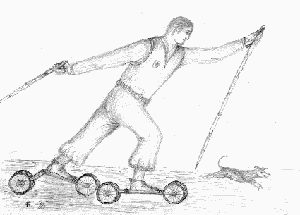 Fig.1 - The rollerskis shown had 4 wheels with a diameter of about
15-20 cm. From the drawing it is not clear the kind of no-return device used. Fig.1 - The rollerskis shown had 4 wheels with a diameter of about
15-20 cm. From the drawing it is not clear the kind of no-return device used.
It could have been a bicycle free-wheel, used in recent
times, or a breaking system coming into action when the folding bar was lifted up. |
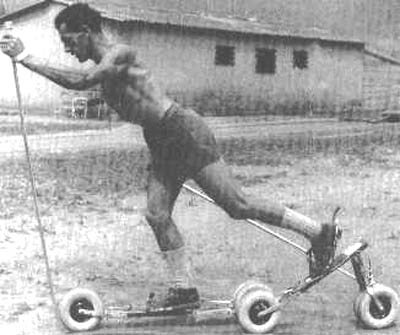
Fig.1a - Federico De Florian
in the training with rollerskis, probably to the year 1958See: Risalgono
al 1958 i primi skiroll usati in Italia
di Giorgio Brusadelli - www.fondoitalia.it - (Gennaio 2005) |
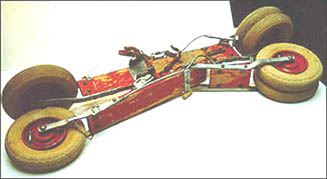
The first competitions, held in Asiago and
Sandrigo (North of Italy), were quite successful, both from participants and public point
of view: for the first time country ski could be enjoyed in town. At the
beginning rollerskis were just for few: quite popular in Scandinavia, only top athletes of
the national team were using them in Italy.
Rollerskis were originally manufactured in Sweden, then in Germany. The
first rollerskis made in Italy came from Sandrigo (near Vicenza) thanks to the initiative
of Fabio Crestani a craftsman
interested in specific equipment for tennis grounds, and manufacturer of grass skis.
|
 |
|
 Fig. 1d – Detail
of reverse lock-up (ratchet) of the front wheel, with free wheel of bicycle |
| Fig. 1c – Rollerskis NORDIX
built in Sweden (1968) |
|
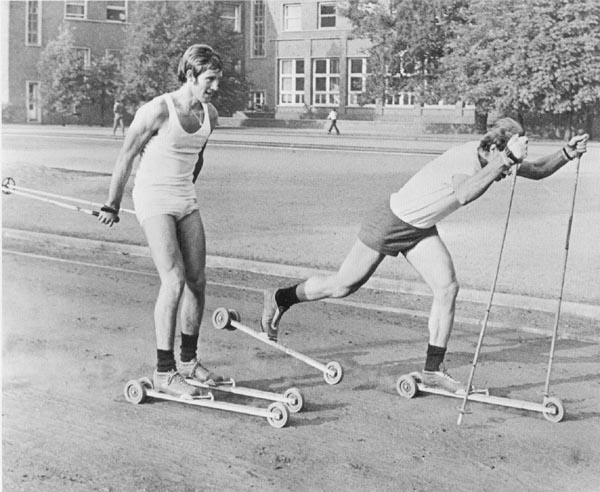 |
| Fig. 2 – Two athletes of Country Ski
French National Team on the off-road track, National Institute of Sports in France, for
the Winter Olympic Games in Japan (October 1971) |
In 1975, rollerskis had
become very popular. Athletes felt they could start to engage themselves in competitions.
In 1976, Giustino Del Vecchio, an air pilot, established a record in
Monza by doing 240.5 km in 24 hours thanks to the skirolls he had designed, using material
and technologies from the aircraft industry: narrow solid wheels with hard tread, reverse
lock-up ball bearings to enable push forward.
From this moment on,
numerous improvements were introduced: the original iron frame was replaced by aluminum,
super light alloys, and then by fiberglass. The length was reduced from 90 to 70 cm. The
diameter of wheels changed from 80 to 125 mm, with rubber or polyurethene tread, smoother
and smoother ball-bearings to the point that manufacturers (Crestani together with Dameno
from Milan and Miorin from Mestre) were forced to differentiate models since rollerskis
designed for competitions were far too fast for training.
Specific skirolls for training were then
designed: two wheels, soft tread more suitable to absorb vibrations produced on rough
pavement.
 |
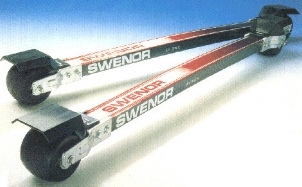 |
| Fig. 2a –ROLLO Italian
rolleski (1979 ) |
Fig. 3
– Some models for training were equipped with only 2 wheels, one in the front one in
the back, very wide, to give stability and made in soft rubber to reduce speed. These were
too slow for racing but very good for country skiing training |
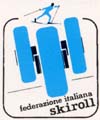 Skiroll Italian Association (AISR) Skiroll Italian Association (AISR)
In 1979, in Italy, a
group of fans founded the Italian Association of Rollerskis (AISR,
Associazione Italiana Skiroll) . In 1988, AISR was renamed FISR (Federazione
Italiana Skiroll), with the objective to promote, and rule the rollerski practice both for
competition and for entertainment.
Today rollerskis is considered - not
just as a complementary practice to country ski - but a discipline with its own
regulations and competitions held when country skying cannot
be practiced.
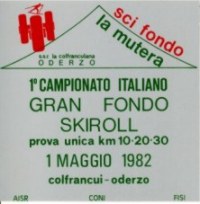 |
Some of the most
popular races (either on flat grounds, uphill or on mixed distance) are:
- Italian Championship
- Italy Cup
- Italian Championship longer distance
- Italian Championship of Relay race
- 12 hours race
- Skirolonga delle valli di Fiemme e di
Fassa in the Fiemme and Fassa Valley, a covering the same track
as the famous Marcialonga
- Skirolonga del Montello
in the Montello is a race that for three years, since 1988, replaced the Skirolonga.
|
Rollerskis used, were
made of 2 single bars 70 cm long, usually in light alloy (some models were also built in
fiberglass) on which one front wheel and two rear wheels (dia 80 – 100 mm) were
mounted. Wheels were made in rubber or plastic material, they were equipped with a reverse
lock-ups (could not go backwards). In some models the front
wheels were free turning.
From classic style to skating
In the three-wheel rollerskis designed
for classic
style the reverse lock-up device prevented wheels to turn backwards during the kicking phase.
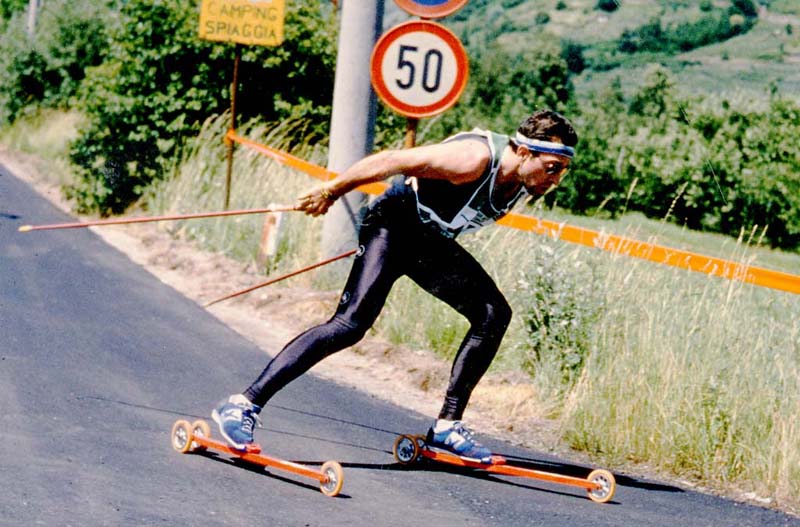
Claudio Marchetto 12 ore di Caldonazzo (TN) del 15.06.1986

Luigi Sebben Recordman 1982
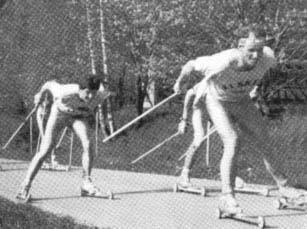 |
| Fig. 7c - A group of athletes in skating with
3-wheehls rollerskis |
|
The
introduction of skating in country skiing implied some changes in the use of materials and
training methods; which consequently produced an impact on rollerskis (maybe changes were
started by rollerskis, with which skating is much easier). From 3 to 2
wheels, much lighter and easier to use, rollerskis could be used both for the
classic style and skating.
Paolo Miorin, with his famous Skirollo,
can be considered the inventor of the innovative 2-wheels rollerskis.
For some years, speed races have been
organized by G.S. Ski Skett during the month of November first in Bassano del Grappa, then
in Sandrigo. The results of these speed races can be seen in the Record Day results.
Some of the powerful athletes of this
transition period were Efrem Bussolaro,
Guido Masiero and Silvano Berlanda still practicing at top level, among women Monica and
Sara Rigoni from C.S. Bassano and Elisa
Pavan of C.S. Pettinelli. |
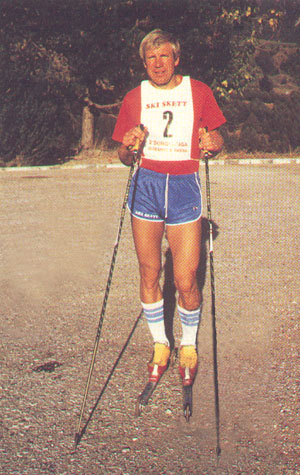
Fig. 8 - Pauli Siitonen, excellent
skiroller, introduced
the skating technique (1985). |
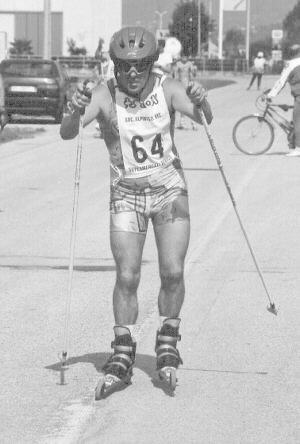
Fig. 9 - Armando Bonaguro during a free style race, using
2-wheels rollerskis (1995). |
 |
 |
| Fig. 10 - Start-up at a
free style race on flat track, with 3-wheehls rollerskis (1986) |
Fig. 10b - Monica Rigoni |
| |
|
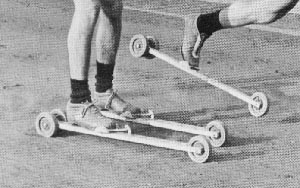
Fig. 11 |
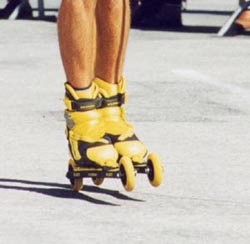
Fig. 12 |
Three-wheel
rollerskis, suitable for the classic style, were heavy and bulky. Thanks to the new
technologies introduced by country skiing, rollerskis became a light, easy-to-use 2-wheel
skate, suitable both for classic and skating style and all its variations. |
| |
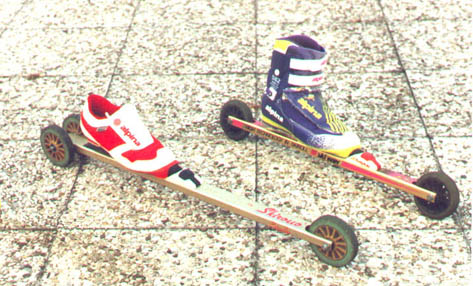 Fig. 13 - Shoes have also changed, since they must be
higher and stiffer on the side to permit a better stability. Fig. 13 - Shoes have also changed, since they must be
higher and stiffer on the side to permit a better stability. |
| Skirolls are equipped with standard locking and cross
country ski shoes. |
| |
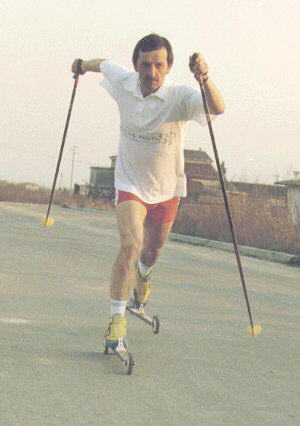
Fig. 15 - Vittorino Corso training in classic style with 3-wheeled rollerskis
(1988) |
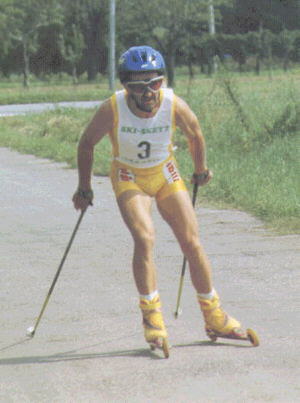
Fig. 16 - Vittorino Corso in competition, skating on 2-wheeled rollerskis (6
hours Piovene Rocchette 1995) |
International rules fixed the minimum
length of rollerskis to 53 cm (from axis to axis). To improve ease of use the length of
rollerskis was reduced.
 Fig. 17
2-wheeled rololerskis for competitions, 70 cm long Fig. 17
2-wheeled rololerskis for competitions, 70 cm long |
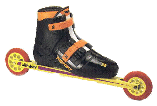 Fig. 18
- 2-wheeled rollerskis for competitions, 53 cm long, with rigid plastic shoes Fig. 18
- 2-wheeled rollerskis for competitions, 53 cm long, with rigid plastic shoes |
Today, many athletes like to remove the
reverse lock-ups (ratchet) that take up part of the energy produced during the
pushing phase. In this situation, the only possible style is skating, since classic style requires the
lock-up (ratchet) on the wheel in the
pushing phase.
Races today
Today, international competitions
are ruled by the Internationl Ski Federation, in Italy, national competitions are ruled by
Federazione Italiana di Hockey e Pattinaggio (F.I.H.P.).
Every year, in Italy many individual or team races are organized (together with many other
for entertainment) either on flat grounds, uphill, mixed tracks, long distance races. A
European Championship and a World Championship is organized every year
Average speed on flat ground races is in the area of 33 km/h, with peak reaching 50
km/h.
Compared to today’s roller blades used by skaters, rollerskis are slower on flat
grounds or on moderate downhill, but are faster uphill thanks to the use of poles and arms
push.
|




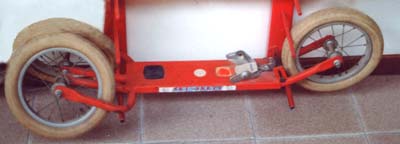 The first model was called ski skett, it had
three pneumatic wheels with a diameter of 35 cm, one in the front and two in the back,
slightly tilted in order to widen the support base.
The first model was called ski skett, it had
three pneumatic wheels with a diameter of 35 cm, one in the front and two in the back,
slightly tilted in order to widen the support base. The second generation of rollerskis called ski
skett F still had pneumatic wheels with a diameter of 18 cm. This model was then
improved. An additional spring was introduced on the hinge to help the athlete stretch the
leg backwards while lifting the frame.
The second generation of rollerskis called ski
skett F still had pneumatic wheels with a diameter of 18 cm. This model was then
improved. An additional spring was introduced on the hinge to help the athlete stretch the
leg backwards while lifting the frame.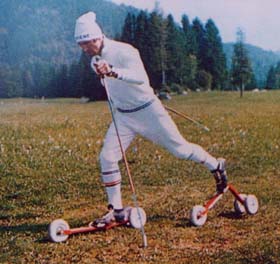





 Skiroll Italian Association (AISR)
Skiroll Italian Association (AISR)
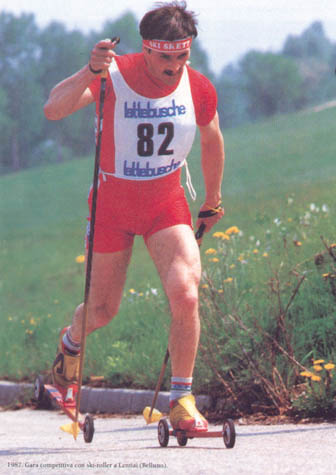
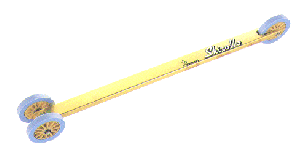
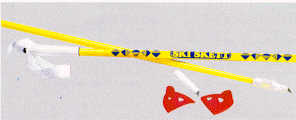
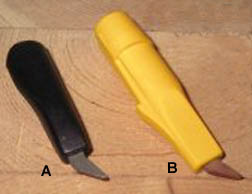 Fig. 7 - rollerski ferrules (tips)
Fig. 7 - rollerski ferrules (tips)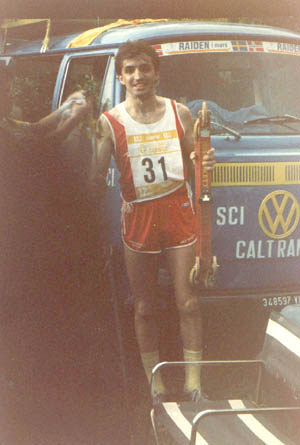
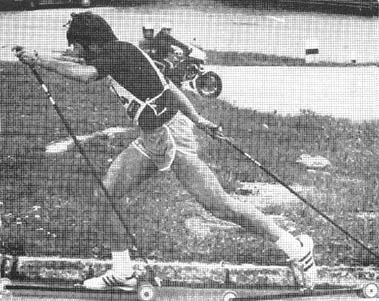











 Fig. 13 - Shoes have also changed, since they must be
higher and stiffer on the side to permit a better stability.
Fig. 13 - Shoes have also changed, since they must be
higher and stiffer on the side to permit a better stability.

 Fig. 17
2-wheeled rololerskis for competitions, 70 cm long
Fig. 17
2-wheeled rololerskis for competitions, 70 cm long Fig. 18
- 2-wheeled rollerskis for competitions, 53 cm long, with rigid plastic shoes
Fig. 18
- 2-wheeled rollerskis for competitions, 53 cm long, with rigid plastic shoes